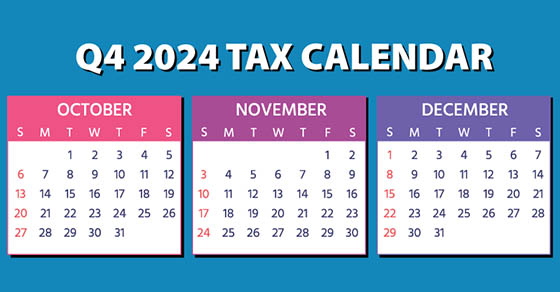2024 Q4 tax calendar: Key deadlines for businesses and other employers
Here are some of the key tax-related deadlines affecting businesses and other employers during the fourth quarter of 2024. Keep in mind that this...
2 min read
 Scott Henvey
:
Oct 8, 2024 2:13:11 PM
Scott Henvey
:
Oct 8, 2024 2:13:11 PM

When drafting partnership and LLC operating agreements, various tax issues must be addressed. This is also true of multi-member LLCs that are treated as partnerships for tax purposes. Here are some critical issues to include in your agreement so your business remains in compliance with federal tax law.
Identify and describe guaranteed payments to partners
For income tax purposes, a guaranteed payment is one made by a partnership that’s: 1) to the partner acting in the capacity of a partner, 2) in exchange for services performed for the partnership or for the use of capital by the partnership, and 3) not dependent on partnership income.
Because special income tax rules apply to guaranteed payments, they should be identified and described in a partnership agreement. For instance:
Account for the tax basis from partnership liabilities
Under the partnership income taxation regime, a partner receives additional tax basis in his or her partnership interest from that partner’s share of the entity’s liabilities. This is a significant tax advantage because it allows a partner to deduct passed-through losses in excess of the partner’s actual investment in the partnership interest (subject to various income tax limitations such as the passive loss rules).
Different rules apply to recourse and nonrecourse liabilities to determine a partner’s share of the entity’s liabilities. Provisions in the partnership agreement can affect the classification of partnership liabilities as recourse or nonrecourse. It’s important to take this fact into account when drafting a partnership agreement.
Clarify how payments to retired partners are classified
Special income tax rules also apply to payments made in liquidation of a retired partner’s interest in a partnership. This includes any partner who exited the partnership for any reason.
In general, payments made in exchange for the retired partner’s share of partnership property are treated as ordinary partnership distributions. To the extent these payments exceed the partner’s tax basis in the partnership interest, the excess triggers taxable gain for the recipient partner.
All other payments made in liquidating a retired partner’s interest are either: 1) guaranteed payments if the amounts don’t depend on partnership income, or 2) ordinary distributive shares of partnership income if the amounts do depend on partnership income. These payments are generally subject to self-employment tax.
The partnership agreement should clarify how payments to retired partners are classified so the proper tax rules can be applied by both the partnership and recipient retired partners.
Consider other partnership agreement provisions
Since your partnership may have multiple partners, various issues can come into play. You’ll need a carefully drafted partnership agreement to handle potential issues even if you don’t expect them to arise. For instance, you may want to include:
Minimize potential liabilities
Tax issues must be addressed when putting together a partnership deal. Contact us to be involved in the process.
© 2024

Here are some of the key tax-related deadlines affecting businesses and other employers during the fourth quarter of 2024. Keep in mind that this...

Get ready: The upcoming presidential and congressional elections may significantly alter the tax landscape for businesses in the United States. The...